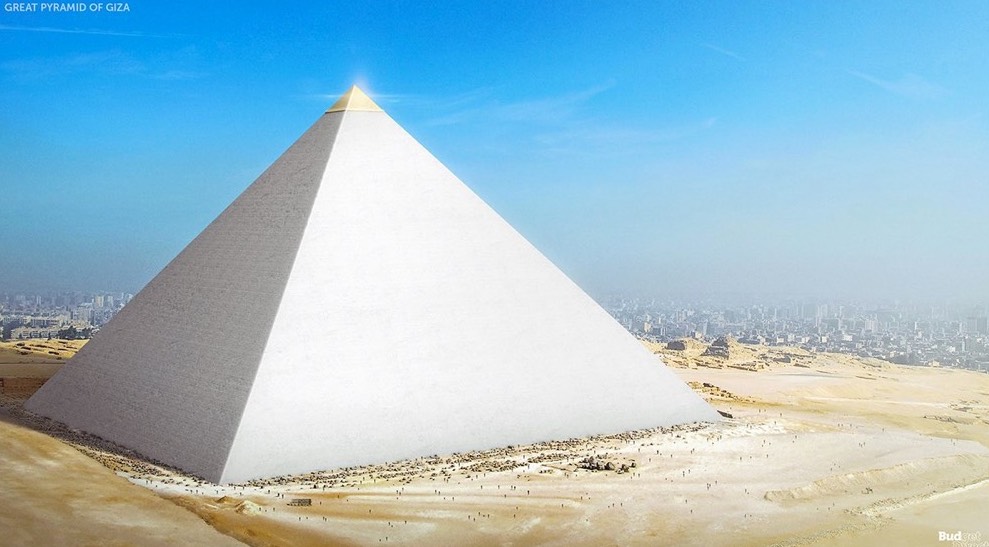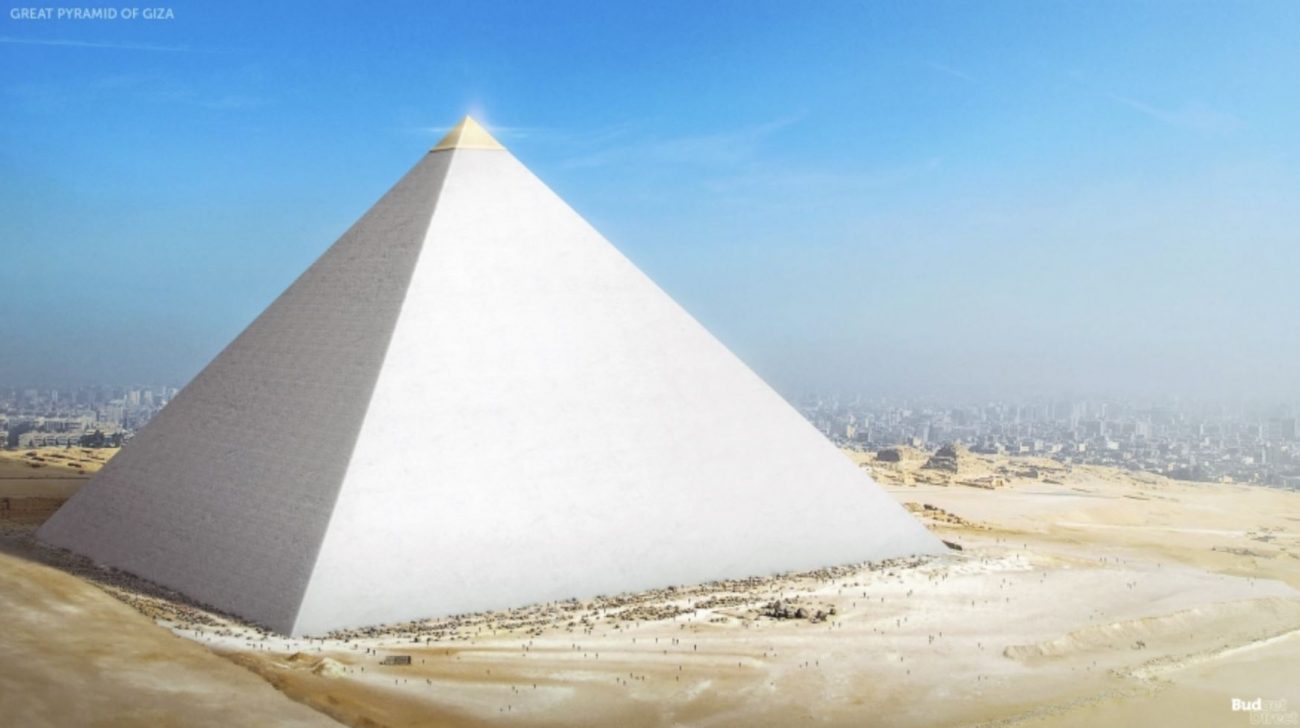
The Great Pyramid of Giza is one of the most famous and mysterious structures in the world. It is the oldest and largest of the three pyramids in Giza and was built during the reign of Pharaoh Khufu. The pyramid's original appearance has been a subject of debate for centuries, with many people believing that it was once covered in smooth, white limestone. In this article, we will explore the original appearance of the Giza Pyramids.
The Smooth Limestone Casing

The most popular theory about the original appearance of the Giza Pyramids is that they were once covered in a smooth casing of white limestone. The casing stones were cut to fit perfectly together, creating a seamless surface that reflected the sun's rays and made the pyramids gleam in the desert sun. The limestone casing was so smooth that it was almost impossible to climb the pyramid without slipping.
The limestone casing was made up of approximately 144,000 stones, each weighing between 2 and 15 tons. The casing stones were removed from the pyramids over time, with many being used to build mosques and other structures in Cairo. Today, only a few pieces of the original casing remain on the pyramids.
The Interior of the Pyramids
The interior of the Giza Pyramids is just as fascinating as their exterior. The pyramids were designed to house the pharaoh's body and his treasures for the afterlife. The burial chamber was located deep within the pyramid, accessed by a series of passages and chambers. The chambers were lined with granite and adorned with hieroglyphics and paintings of the pharaoh's life and journey to the afterlife.
The chambers were also filled with treasures, including gold, silver, and precious gems. These treasures were believed to accompany the pharaoh to the afterlife, where he would use them to live a comfortable and luxurious existence. Today, most of the treasures have been removed from the pyramids and are on display in museums around the world.
The Sphinx

The Sphinx is a giant statue located near the Giza Pyramids. It is believed to have been built during the reign of Pharaoh Khafre and is carved out of a single piece of limestone. The Sphinx is 73 meters long and 20 meters high, making it one of the largest statues in the world.
The Sphinx is believed to represent the pharaoh's power and wisdom, with its human head and lion body symbolizing the pharaoh's ability to rule both man and beast. The Sphinx was also believed to guard the entrance to the Giza Necropolis and protect the pharaoh's tomb from intruders.
Theories About the Original Appearance

There are several theories about the original appearance of the Giza Pyramids. Some people believe that the pyramids were once covered in gold, while others believe that they were painted in bright colors. There are also theories that the pyramids were used as power plants or that they were built by aliens.
However, the most widely accepted theory is that the pyramids were originally covered in a smooth casing of white limestone. This theory is supported by the discovery of limestone casing stones at the base of the pyramids and by ancient texts that describe the pyramids as being covered in white limestone.
Conclusion
The original appearance of the Giza Pyramids is a fascinating subject that has been debated for centuries. While there are many theories about what the pyramids looked like, the most widely accepted theory is that they were once covered in a smooth casing of white limestone. Regardless of their original appearance, the Giza Pyramids continue to inspire awe and wonder in people from around the world.